When I arrived in Puerto Ayora on Santa Cruz Island in the Galapagos, a quick stroll down the main street showed me that all of the day-trips to the different islands were incredibly expensive. While it may be a lot cheap-er to travel to the Galapagos independently rather than on a cruise, it is still certainly not cheap! For this reason, I decided that I would only do one or two day-trips, and asked around which were the best islands for seeing the endemic wildlife. Everybody recommended North Seymour Island, so I set about trying to find the best deal, preferably for the next day.
Of course, it was peak season in the Galapagos (mid-Dec – Feb) and almost everything was booked up until after New Year! In the end, I had to spring for a slightly more expensive boat, but they gave me “mates rates” (it was the last place they had available) and didn’t charge me for the loan of a wetsuit, so it only turned out to be about $5 more 🙂
I was picked up from my hotel at 8am and our group bused across the island to the main dock near the airport. There we boarded a zodiac to take us out to the AltaMar, which was anchored a little further out.
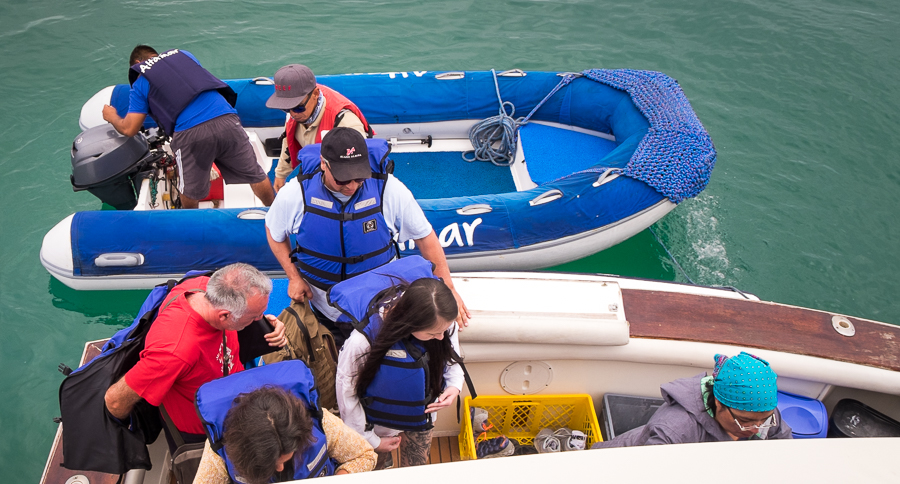
The AltaMar is one of the more luxurious boats that do these day-trips (hence why it was more expensive) and I quickly nabbed a perch on the very comfortable padded benches on the top level, with a perfect view in the direction of sail.
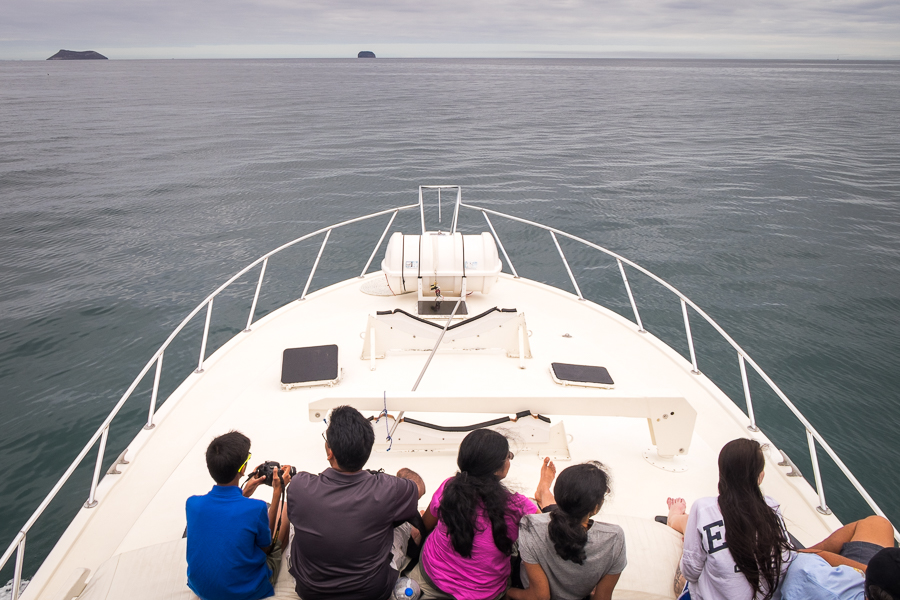
Oh how I love being on boats! There is something really relaxing about it (assuming it isn’t too rough) and I can sit for hours just watching the landscape glide by. Fortunately, I had plenty of time to do just that, as it took us about an hour to reach the landing place on North Seymour Island.
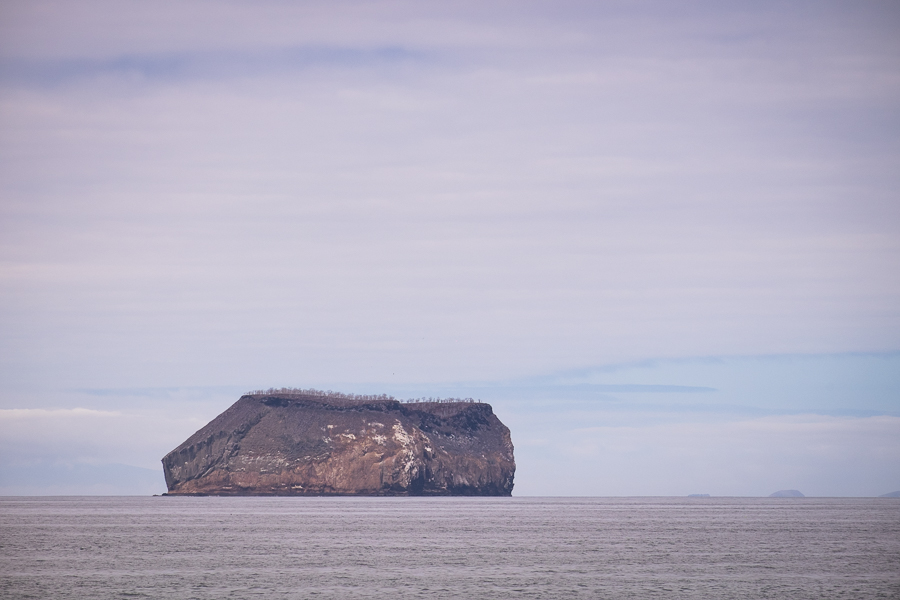
North Seymour Island
There, we were greeted by one of my favourite animals in all of the Galapagos – a Blue-footed Boobie 🙂 Interestingly, although these birds are one of the main symbols of the Galapagos, they are not endemic to the Islands. They can also found along the Pacific Coast of the Americas from California to Peru, but it is thought that more than half of the world’s population lives in the Galapagos.
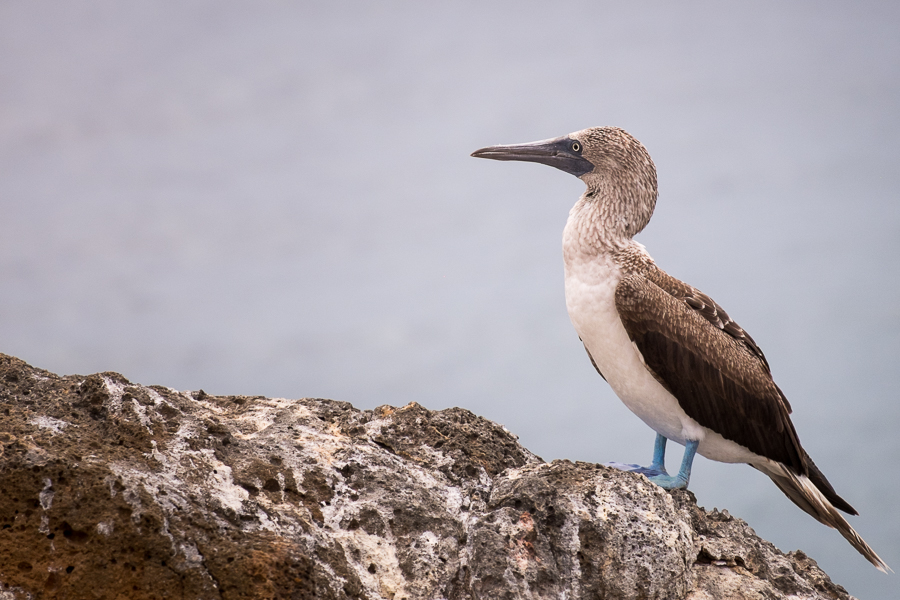
After everyone was ashore, we headed off on our 1.5 hour “hike” (more like very easy stroll) around the set path that has been established on North Seymour Island to try to protect the habitat as much as possible. These paths were already in existence 14 years ago when I first visited, but have become even more critical with the growing popularity of the Islands as a tourist destination (almost 225,000 people visited the Galapagos in 2015 compared with 75,000 the year of my first visit!).

Everywhere I looked, there were Frigatebirds on their nests – both Majestic and Great – and our guide explained (and then gave us pop-quizzes) about the key differences between the males (red throat-sac), females (white chest) and juveniles (white/rust face and chest, white belly).

We were lucky enough to see the red throat-sac on a few male Frigatebirds (uninflated, given it wasn’t breeding season)
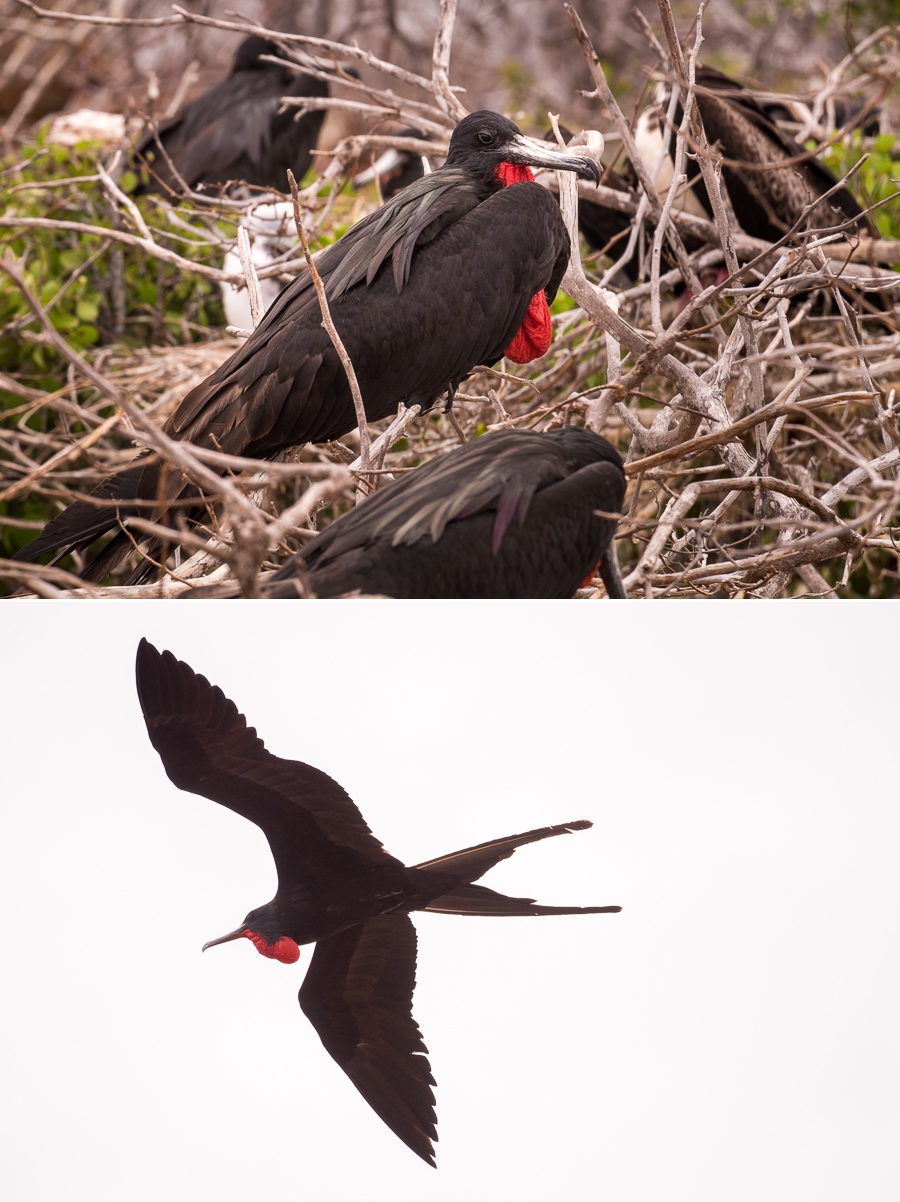
and some very fluffy-looking chicks. Frigatebird nests are always built in bushes or trees so that they are off the ground.

We also saw Land Iguanas absolutely everywhere, and actually North Seymour Island is one of a few islands in the Galapagos where they can easily be seen in the wild. They are much larger than the Marine Iguanas, have a rounder tail, and the males are yellow in colour.

My first visit to the Galapagos coincided with the breeding season of the Blue-footed Boobies, and my strongest memory from that trip was that there were so many Blue-footed Boobies that you had to really watch where you were walking. They would sit in the middle of the path and squawk at you to make sure that you stepped over/around them rather than on them. And the males would be doing their goofy dance in all corners, trying to attract a mate. It is this goofy dance that so endears these birds to absolutely everyone – and if you get the chance to see it – you must 🙂
Unfortunately, I wasn’t visiting during mating season this year so the boobies were pretty few and far between, and certainly, none were dancing. Our guide was able to point out the difference between the juveniles and the adults though. Can you spot the difference in the below?

The juveniles don’t have blue feet! The blue colour is caused by caratenoid pigments from their food, and acquired over time through their diet. He also explained how, in contrast to the Frigatebirds, the Blue-footed Boobies make their nests on the ground, and you can tell where a Boobie nest was by the ring of white guano surrounding a relatively clean centre. Yes, they just poo from where they are sitting.

On the way back to the AltaMar we managed to spot a few Galapagos Sea Lions

as well as the Galapagos Brown Pelican (much smaller than an Australian Pelican) and a Swallow-tailed Gull with its characteristic red eye-ring.

Las Bachas Beach – Santa Cruz Island
We had lunch back on board the AltaMar as we sailed around to Las Bachas beach on Santa Cruz Island. There, we went searching for flamingos, but unfortunately weren’t in luck on this day.

We did, however, manage to glimpse the sunken remains of the old US WWII barge for which the beach is named. The US sank two barges here before leaving, and given that the locals were unfamiliar with the word “barge”, they called it Bachas.
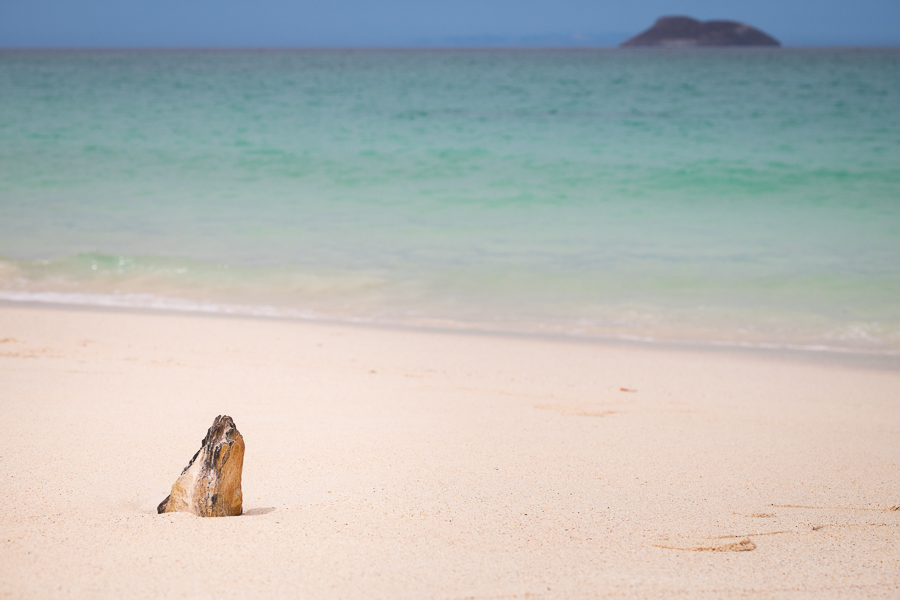
We also went snorkeling here for about an hour, though I have to admit the water was pretty murky and there wasn’t much to be seen beyond some Rainbow fish and a few smaller varieties. I also realised that I probably should have tried out my fancy snorkel mask that I bought in Europe before wearing it for the first time, and definitely should have read the instruction manual of my cheaper-than-a-Go-Pro action camera before trying to use it.
From there it was a 40 minute cruise back to the dock and another 45 minutes in the bus to arrive back at Puerto Ayora.
Recommendation
The day-trip to North Seymour Island from Santa Cruz is one of the best for spotting wildlife. Though try to make your trip to the Galapagos coincide with Blue-Footed Boobie mating season – it really is something extraordinary to behold!
Time: 8 hours, including bus transfers, time on the boat and time on the islands.
Cost: I paid USD$170, but it really depends on which boat you end up on. The cheapest price I heard was USD$160.
